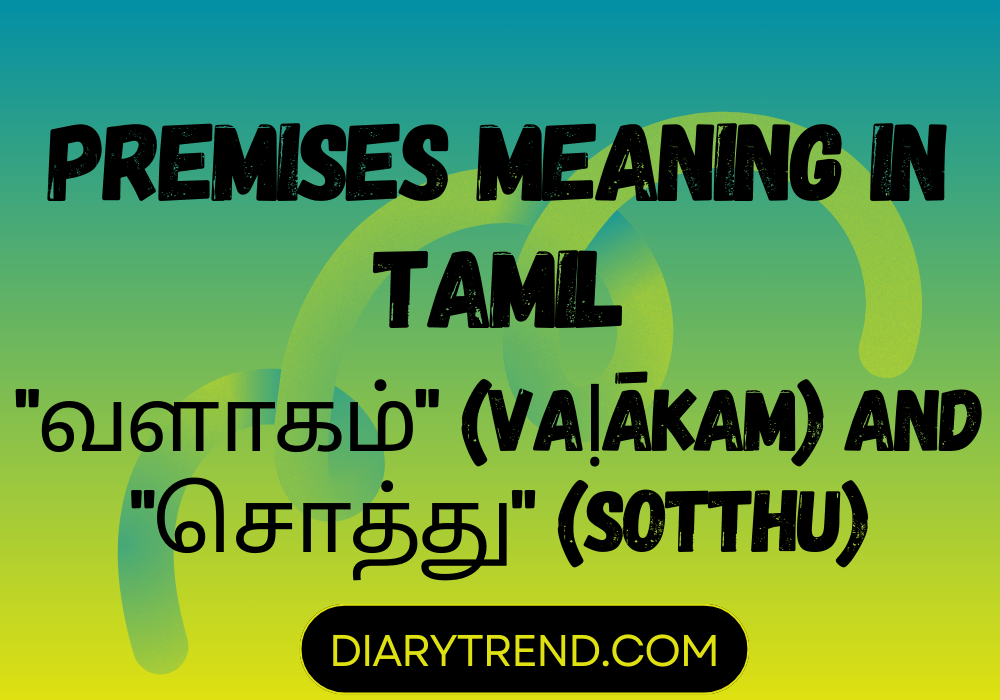The Tamil language, with its rich cultural and linguistic heritage, offers a nuanced understanding of concepts that are often considered straightforward in other languages. One such concept is that of “premises,” which in English refers to a building along with its land and facilities. In Tamil, this concept is encapsulated by the words “வளாகம்” (Vaḷākam) and “சொத்து” (Sotthu), each carrying its own cultural and contextual significance.
வளாகம் (Vaḷākam): More Than Just Buildings
The term “வளாகம்” refers to the physical space encompassing buildings and their immediate surroundings. However, in Tamil culture, வளாகம் signifies more than just the architectural elements; it embodies the essence of the space where life unfolds, traditions are celebrated, and communities come together. This term is often used in contexts such as educational institutions, temples, and commercial complexes, where the emphasis is not just on the physical structure but on the activities and interactions that these spaces facilitate.
சொத்து (Sotthu): The Value of Ownership
On the other hand, “சொத்து” refers to property or estate, highlighting the aspect of ownership and belonging. This term encompasses not only the physical dimensions of the premises but also the legal and emotional ties that bind individuals to their property. In Tamil society, சொத்து represents security, heritage, and continuity, reflecting the deep-rooted values of family, legacy, and stewardship over one’s possessions.
Legal and Social Implications
In legal and business contexts, understanding the nuances between வளாகம் and சொத்து is crucial. While both terms can be used to discuss property and premises, their usage can imply different aspects of ownership, responsibility, and utilization. For instance, when negotiating leases or property transactions, the clarity of these terms helps in delineating the scope of agreements, rights, and obligations of the involved parties.
Cultural Significance
The Tamil approach to discussing premises and property reflects a broader cultural perspective that values the interconnectedness of people, their environment, and their heritage. Buildings and land are not seen merely as assets but as integral parts of the social fabric, imbued with history, memories, and communal significance. This holistic view fosters a sense of responsibility towards preservation, communal harmony, and sustainable utilization of resources.
Conclusion
The words வளாகம் and சொத்து, while serving as translations for “premises,” open up a rich tapestry of cultural, legal, and social meanings in Tamil. They remind us that language is a window into the values and priorities of a culture, offering insights into how spaces are perceived, owned, and utilized within that cultural context. Through understanding these concepts, one gains a deeper appreciation for the Tamil perspective on property, community, and the spaces we inhabit.
